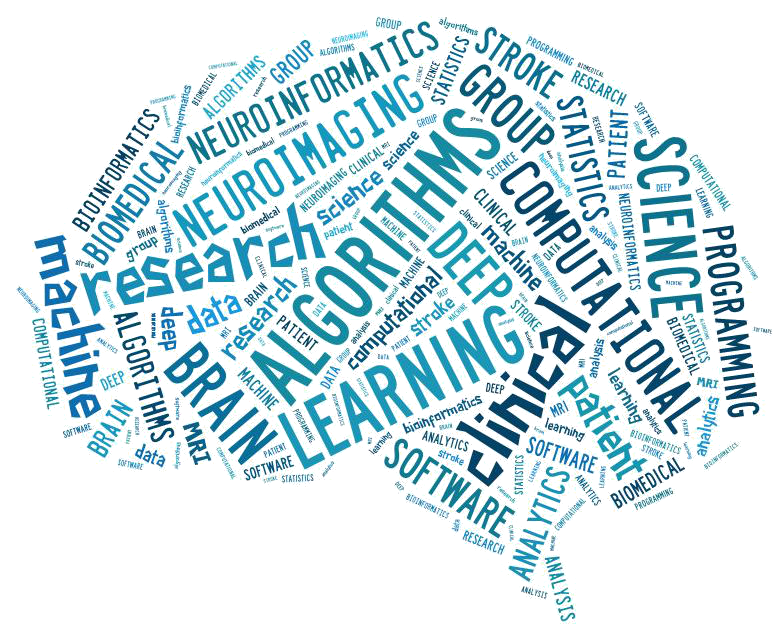We use machine learning for many applications in our stroke research ranging from segmentation, classification and prediction.
Segmentation
Accurate automated infarct segmentation is needed for acute ischemic stroke studies relying on infarct volumes as an imaging phenotype or biomarker that require large numbers of subjects. This has important clinical implications as acute infarct volumes are increasingly being used for triage of stroke patients presenting for late window interventions. We showed that an ensemble of convolutional neural networks trained on multiparametric MRI maps outperforms single networks trained on solo MRI parametric maps. You can read our paper, “Ensemble of Convolutional Neural Networks Improves Automated Segmentation of Acute Ischemic Lesions Using Multiparametric Diffusion-Weighted MRI,” here: http://www.ajnr.org/content/40/6/938.
We were able to use this algorithm to segment a "big data" set of acute ischemic stroke data to make physiological inferences regarding stroke lesion sizes and stroke subtypes. Ultimately we plan to use this data to study genetic pathways underlying stroke. You can view our original article, "Big Data Approaches to Phenotyping Acute Ischemic Stroke Using Automated Lesion Segmentation of Multi-Center Magnetic Resonance Imaging Data", here: https://www.ahajournals.org/doi/full/10.1161/STROKEAHA.119.025373
Classification
Fundamental advances in stroke care will require pooling imaging phenotype data from multiple centers, to complement the current aggregation of genomic, environmental, and clinical information. Sharing clinically acquired MRI data from multiple hospitals is challenging due to inherent heterogeneity of clinical data, where the same MRI series may be labeled differently depending on vendor and hospital. Furthermore, the de-identification process may remove data describing the MRI series, requiring human review. However, manually annotating the MRI series is not only laborious and slow but prone to human error. We developed deep learning models using transfer learning techniques to automatically classify MRI modalities based purely on imaging features.

Prediction
We used machine learning algorithms to combine multiparametric MRI to predict on an individual patient basis how much tissue is likely to die without intervention. This can allow physicians to judge whether the risk of aggressive intervention is worth the potential benefit of rescuing tissue likely to die without treatment. You can read our landmark paper, "Predicting tissue outcome in acute human cerebral ischemia using combined diffusion- and perfusion-weighted MR imaging" published in 2001 in Stroke, here: https://www.ahajournals.org/doi/full/10.1161/01.STR.32.4.933. Since then, we have extended our approach to deeper networks, as shown below.




